Urban German Graffiti: Berlin Posted by Constanze on Jun 21, 2015 in Culture, Language
Berlin has been called the most bombed city in Europe. It has also been called the “graffiti capital of Europe” . Coincidentally (or perhaps not so coincidentally), Berliners have a slang term known as Das Bombing, referring to the act of ‘bombing’ the streets with graffiti.
This should be enough to tell you that Berlin has a very vibrant graffiti/street art scene. Although it is not technically legal, a lot of this graffiti is not removed, or it stays for several years before finally being removed. Graffiti has become such a part of Berlin’s Straßenkultur (street culture) that it’s possible it’s become as much a part of Berlin as all of its other tourist attractions. There is even a walking tour of Berlin’s street art – which includes a graffiti workshop afterwards!
It seems, at least, that Berlin has accepted street art as part of its cultural identity – especially if the word Das Bombing is anything to go by. Legal or not, it appears that Berlin street art is here to stay.
This bold statement by one graffiti artist sums it up nicely:
Wären Graffiti legal wäre Kriminaloberkommissar Matthias Brust Verkehrspolizist
If graffiti were legal, Detective Superintendent Matthias Brust would be a traffic warden.
HISTORY
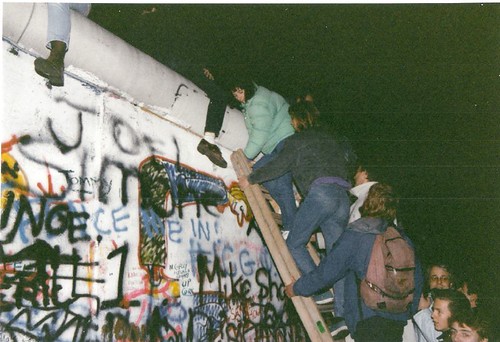
The fall of the Berlin Wall – November 1989. Photo: gavinandrewstewart on flickr.com under CC BY 2.0
Berlin’s street art scene could well be a product of 1980s Berlin and the Berliner Mauer. During the time of the Berlin Wall, the West side of the wall was covered in paintings and drawings as a means of expression and/or rebellion by the people on the western side, and as such it attracted worldwide attention. The East side of the wall, meanwhile, was kept blank, as nobody was allowed to go close enough to it to be able to paint on it. Once the Wall fell, art was added to the eastern side, too. What remains today is known as the East Side Gallery, a 1.3 km stretch of the Berlin Wall located near the centre of Berlin. The gallery is a collection of paintings done in 1990, after the Wall fell, documenting the events gone by and the hope for a better Germany. Ironically, some of these paintings were vandalised by graffiti and had to undergo restoration..
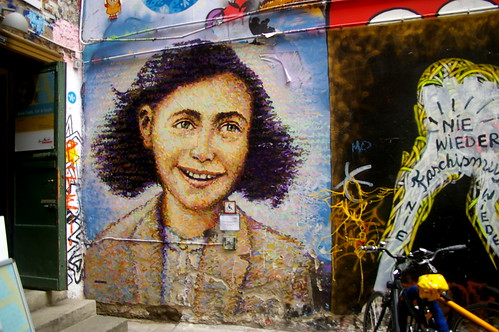
Anne Frank plus the words “Nie wieder Faschismus” – “Fascism: never again” Photo by raeallen on flickr.com under CC BY 2.0
Then there is the graffiti that can be found in the Reichstag in Berlin, scribbled by Russian soldiers after Germany’s defeat in WW2. This, too, remains as a reminder of Germany’s past.
Today, graffiti artists are constantly expressing political opinions through their graffiti. Here are just a few examples, with translations in the captions:
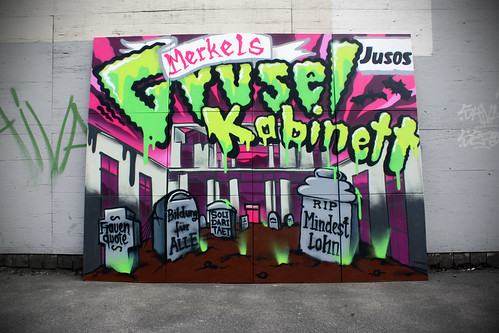
Merkel’s horror cabinet. Written on the tombstones is: RIP minimum wage – women’s quota – education for all – solidarity. Photo: aleksvansputto on flickr.com under CC BY-SA 2.0
Do you think graffiti is ruining Berlin, or that it enhances it? Do you think Berlin can get away with its graffiti because of the city’s history? Let me know what you think in the comments!
Bis bald!
Constanze x

Build vocabulary, practice pronunciation, and more with Transparent Language Online. Available anytime, anywhere, on any device.
About the Author: Constanze
Servus! I'm Constanze and I live in the UK. I'm half English and half German, and have been writing about German language and culture on this blog since 2014. I am also a fitness instructor & personal trainer.



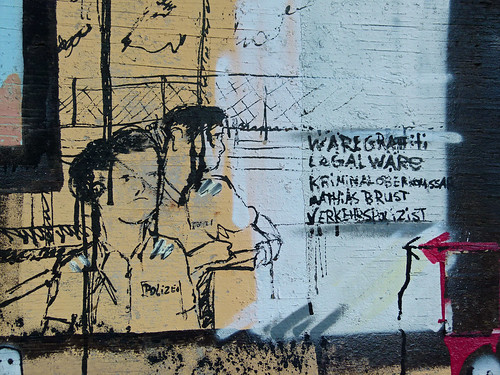
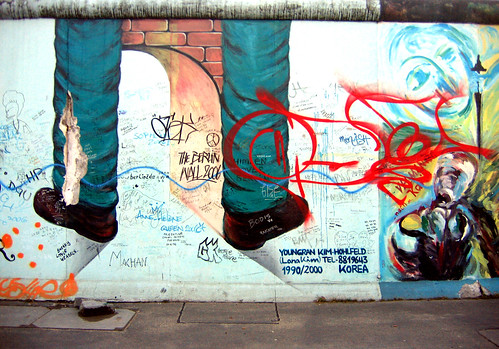

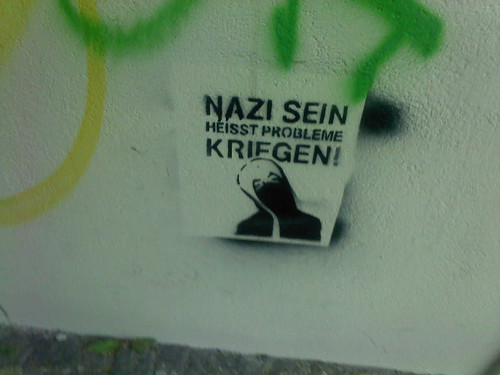
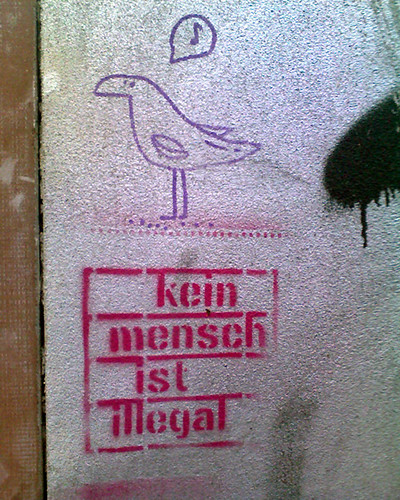

Comments:
Joseph T. Madawela:
I think that graffiti adds to the vibrancy of the city and it shows that Berliners are not apathetic mindless robots.
Carlos A:
I should note that doing graffiti, especially large pieces, was known as “bombing” in San Francisco at least as far back as the early 1980s. I have enjoyed some of the works I have seen when in Berlin.
Constanze:
@Carlos A Awesome little fact! Thanks, Carlos!
Gina:
I love clever, creative graffiti 🙂 You certainly see a lot more of it in big cities like Berlin than in my tiny dull little English hometown lol. Our vandals aren’t particularly artistic OR politically engaged.
I was in Berlin just last month for Christopher Street Day. One of the most exciting cities in Europe in my opinion!